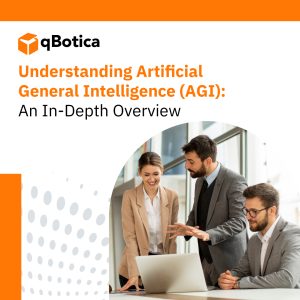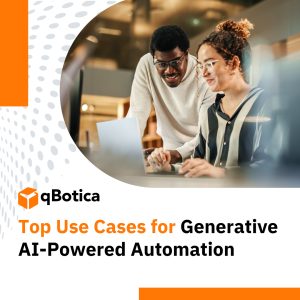In the contemporary workplace, artificial intelligence (AI) is orchestrating a rapid transformation, presenting professionals with a plethora of advantages and opportunities. Its role extends from automating mundane tasks to elevating decision-making processes, rendering AI an indispensable companion across diverse industries.
Delve into the intricate world of AI with this quick-start guide, meticulously tailored for beginners. Unearth a comprehensive comprehension of AI and its day-to-day practical applications. Whether it’s harnessing AI for heightened productivity or navigating the nuances of ethical considerations, this guide stands as an invaluable companion for those commencing their AI expedition.
Artificial Intelligence – An Overview
The rapid evolution of AI encompasses the creation of intelligent machines, proficient in tasks traditionally linked to human cognition. From streamlining repetitive tasks to enriching decision-making processes, AI has become an inseparable component across various industries, such as manufacturing, healthcare, transportation, and banking, offering a spectrum of benefits for both employers and employees.
Often intertwined with subfields like machine learning and deep learning, AI empowers systems to learn and adapt from training data, mirroring human intelligence. Grasping the fundamentals of AI, from its applications to its inner workings, is imperative for professionals eager to unlock its potential in their daily endeavors.
Advantages of AI for Employers and Employees
Incorporating artificial intelligence into the workplace offers a plethora of benefits, for both employers and employees. Some of the benefits are as follows:
For Employers:
- Boosted Productivity – Automation of repetitive tasks enables employees to dedicate their energy to more intricate operations, resulting in heightened productivity.
- Cost Savings – AI streamlines operations and optimizes processes, leading to significant cost reductions for employers.
- Job Creation – Despite eliminating certain roles, AI opens up new job opportunities, particularly in the development and maintenance of AI systems.
- Job Satisfaction – By automating mundane tasks, AI contributes to increased job satisfaction, allowing employees to focus on more meaningful and fulfilling work.
For Employees:
- Improved Effectiveness – AI liberates employees to concentrate on complex and strategic tasks, ultimately enhancing their overall effectiveness in the workplace.
- Skill Enrichment – Employees can develop new skills that complement AI technologies, such as problem-solving and strategic thinking.
- Enhanced Communication – AI improves communication processes, fostering more efficient and effective collaboration among employees.
Preparing for AI Integration
To gear up for the integration of AI in the workplace, employers should prioritize the establishment of a robust platform for AI implementation. This involves key considerations, including:
- Quality Data and Well-Maintained Infrastructure – Building the foundation for AI integration begins with quality data and a meticulously maintained, structured data estate, ensuring accuracy and reliability.
- Security and Compliance – Success in AI implementation hinges on aligning with security and compliance standards, safeguarding the integrity of the integration.
- Skills and Training Programs – Crucially, investing in AI training and development programs for employees is necessary to equip the workforce for seamless AI integration.
- Transparent Communication and Employee Involvement – Fostering a supportive environment for AI integration involves transparently communicating its benefits and actively involving employees in the implementation process.
- Emphasizing Human-AI Collaboration – Vital to the process is highlighting the collaborative nature of human-AI interaction. Educating employees about the strengths and limitations of AI systems contributes to successful integration.
- Choosing the Right AI Solutions – With the exponential growth of AI technologies, employers must meticulously select the most relevant AI solutions tailored to their specific needs.
AI Safety in the Workplace
Integrating AI into the workplace demands a laser focus on safety. Employers, aiming to infuse AI into operations, recognize the pivotal role AI plays in fostering a secure work environment. It’s not just about efficiency; it’s about creating a haven.
AI, with its discerning eyes, identifies potential hazards and risks, weaving a safety net. The automation of processes adds another layer, reducing human exposure to potential dangers. Real-time feedback becomes the guardian angel, guiding employees away from risks.
In the realm of safety tools, AI emerges as the vigilant overseer. It doesn’t just monitor; it ensures everyone wears the necessary protective gear, fortifying the workplace against unforeseen threats. It’s the silent guardian in the background, contributing relentlessly to a secure atmosphere.
But AI doesn’t stop there. It steps into the realm of accident prevention, deploying sensors that track every move—employees, machines, production lines—all under its watchful gaze. Swift alerts pierce the air, preventing injuries and nipping potential issues in the bud.
Yet, caution flags wave high. Aligning AI with security and compliance standards isn’t a choice; it’s a mandate. Employees, the lifeblood of any workplace, need more than just machines working beside them. Training becomes the bridge between human expertise and the digital realm, ensuring a harmonious coexistence.
How to Use AI in Your Daily Work
Enhance your daily work with AI using these practical tips and examples:
1. Identify Pain Points
Pinpoint areas of time wastage or hindered productivity. Identify tasks suitable for optimization or automation through AI.
2. Explore AI Tools
Research and discover AI tools addressing your identified pain points. In the realm of AI tools aimed at workplace optimization, one noteworthy solution is qBotica. qBotica distinguishes itself as a holistic answer to streamline operations and boost productivity.
Their custom AI applications are crafted to tackle diverse challenges encountered in everyday work processes, providing advantages such as efficient time management, automated task execution, and enhanced decision-making capabilities.
3. AI Training Programs
Enroll in AI training programs to boost your skills and understanding. Courses like Google’s Introduction to AI and Microsoft’s AI for Business Users are valuable for professionals in various roles.
4. Embrace AI for Efficiency
Recognize AI’s potential to enhance efficiency in everyday tasks such as meeting notes, emails, and intelligent document processing. Experience a substantial boost in productivity.
Conclusion
AI is reshaping the workplace, benefiting both employers and employees. Understanding AI basics, identifying pain points, exploring AI tools, and embracing AI for efficiency can seamlessly integrate AI into your daily work routine. Prioritize AI safety, ensuring employees are trained to work alongside AI systems safely.
As businesses navigate AI challenges and opportunities, qBotica provides tailored solutions for diverse industry segments. Streamline operations, cut costs, and boost productivity. Explore how qBotica can empower your business by getting in touch today—invest in the future with qBotica!




